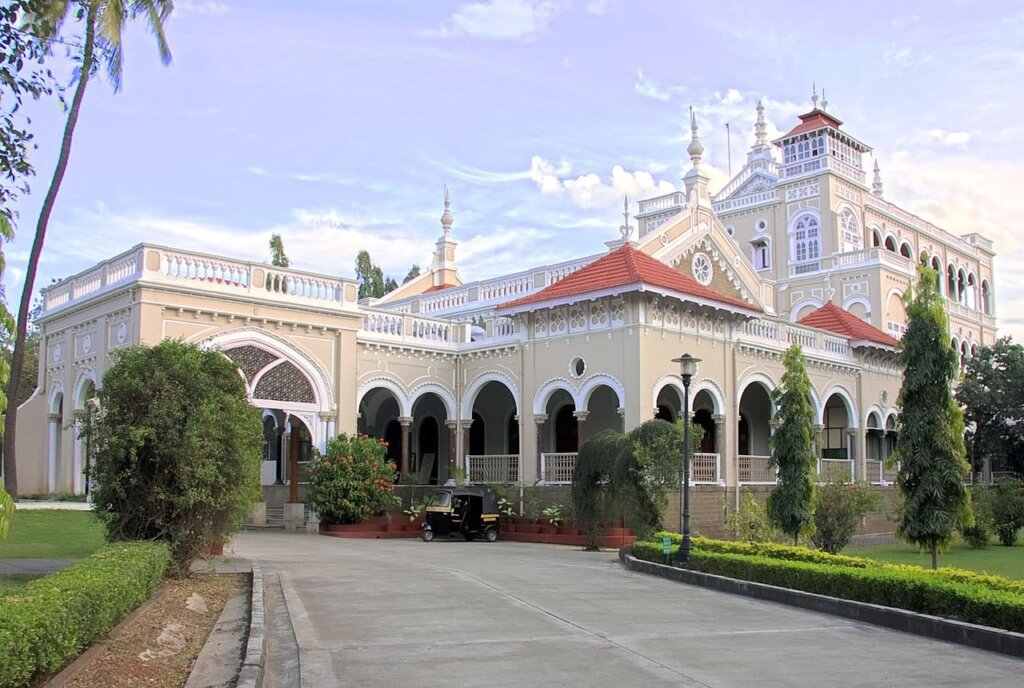
A Glimpse into the Aga Khan Palace: A Historical Gem in Pune
Table of Contents
ToggleThe Aga Khan Palace, a magnificent structure nestled in Pune, India, is a testament to the rich history of the country’s freedom struggle. This architectural marvel, once a private residence, has since become a significant historical landmark due to its association with Mahatma Gandhi and other prominent leaders of the Indian independence movement.
A Brief History of Aga khan palace
Built in 1892 by the Aga Khan III, the palace was initially intended as a private residence for his family. However, during the Quit India Movement in 1942, the British authorities arrested Mahatma Gandhi and imprisoned him at the Aga Khan Palace. Gandhi’s wife, Kasturba Gandhi, and his secretary, Mahadev Desai, were also detained here.
A Symbol of Resistance
The palace became a symbol of resistance against British colonial rule. During their imprisonment, Gandhi and his associates continued their non-violent struggle for India’s independence. The palace witnessed the tragic deaths of Mahadev Desai and Kasturba Gandhi, who passed away due to ill health while incarcerated.
A Memorial and Museum
Today, the Aga Khan Palace serves as a memorial to Gandhi and other freedom fighters. It has been converted into a museum, showcasing various artifacts, documents, and photographs related to the Indian independence movement. Visitors can explore the palace’s rooms, gardens, and the memorial dedicated to Gandhi and his associates.
Key Attractions
* Gandhi’s Cell: See the modest room where Mahatma Gandhi was confined during his imprisonment.
* Kasturba Gandhi Memorial: Pay tribute to the life and legacy of Gandhi’s wife.
* Mahadev Desai Memorial: Learn about the contributions of Gandhi’s loyal secretary.
* Museum Exhibits: Explore the collection of artifacts and documents related to the freedom struggle.
* Peaceful Gardens: Enjoy the serene ambiance of the palace’s beautifully landscaped gardens.
A Deeper Dive into the Aga Khan Palace
The Aga Khan Palace is more than just a historical landmark; it’s a living testament to India’s struggle for independence. Let’s explore some additional details and insights:
The Palace’s Architecture and Significance
* Islamic Architectural Influence: The palace showcases the beauty of Islamic architecture, with intricate carvings, arches, and domes.
* Symbol of Charity: The Aga Khan III built the palace as an act of charity to provide work and relief to the poor during a famine in the region.
* A Gift to India: In 1969, the fourth Aga Khan donated the palace to the Indian government as a tribute to Mahatma Gandhi and his philosophy.
The Fateful Years of Imprisonment
* The Quit India Movement: The palace gained historical significance during the Quit India Movement in 1942.
* Gandhi’s Confinement: Mahatma Gandhi, along with his wife Kasturba Gandhi and his secretary Mahadev Desai, were imprisoned here.
* Tragic Losses: Tragically, both Mahadev Desai and Kasturba Gandhi passed away while incarcerated, due to ill health and the harsh conditions.
The Palace Today
* A Memorial and Museum: The Aga Khan Palace now serves as a memorial and museum dedicated to the Indian freedom struggle.
* Exhibits and Artifacts: Visitors can explore the palace’s exhibits, which include personal belongings of Gandhi and his associates, photographs, and documents related to the movement.
* A Place of Peace: The palace’s serene atmosphere and beautiful gardens offer a peaceful retreat for visitors.
If you’re planning a trip to Pune, visiting the Aga Khan Palace is a must. The palace offers a unique opportunity to delve into India’s history and connect with the legacy of Mahatma Gandhi and the freedom fighters.
Planning Your Visit to the Aga Khan Palace in Pune
The Aga Khan Palace is a must-visit historical landmark in Pune, India. To make the most of your visit, it’s essential to plan ahead. Here’s a guide to the palace’s timings, entry fees, and other useful information:
Timings
* Open Days: The palace is generally open to visitors from Tuesday to Sunday.
* Closed Days: It’s closed on Mondays.
* Visiting Hours: The palace typically opens in the morning and closes in the evening. However, it’s advisable to check the official website or contact the palace directly for the most accurate timings.
Entry Fees
* Ticket Prices: The entry fee for the Aga Khan Palace is nominal and affordable.
* Student and Senior Discounts: The palace may offer discounts for students and senior citizens.
Tips for Your Visit
* Best Time to Visit: Early mornings or late afternoons are often less crowded, allowing for a more peaceful experience.
* Guided Tours: Consider taking a guided tour to gain deeper insights into the palace’s history and the lives of Gandhi and his associates.
* Photography: Photography is usually allowed within the palace premises, but there might be restrictions in certain areas.
* Dress Code: Dress modestly and respectfully, especially when visiting the memorial areas.
* Food and Drink: While there might be limited food and drink options within the palace, you can find plenty of eateries nearby.
Nearby Attractions
* Shinde Chhatri: This beautiful memorial is dedicated to the Shinde rulers of Gwalior.
* Raja Dinkar Kelkar Museum: Explore a vast collection of artifacts and antiques at this renowned museum.
* Lal Mahal: Visit the historic residence of the Peshwa rulers of Pune.
By following these guidelines and planning your visit accordingly, you can make the most of your experience at the Aga Khan Palace and gain a deeper appreciation for India’s rich history.